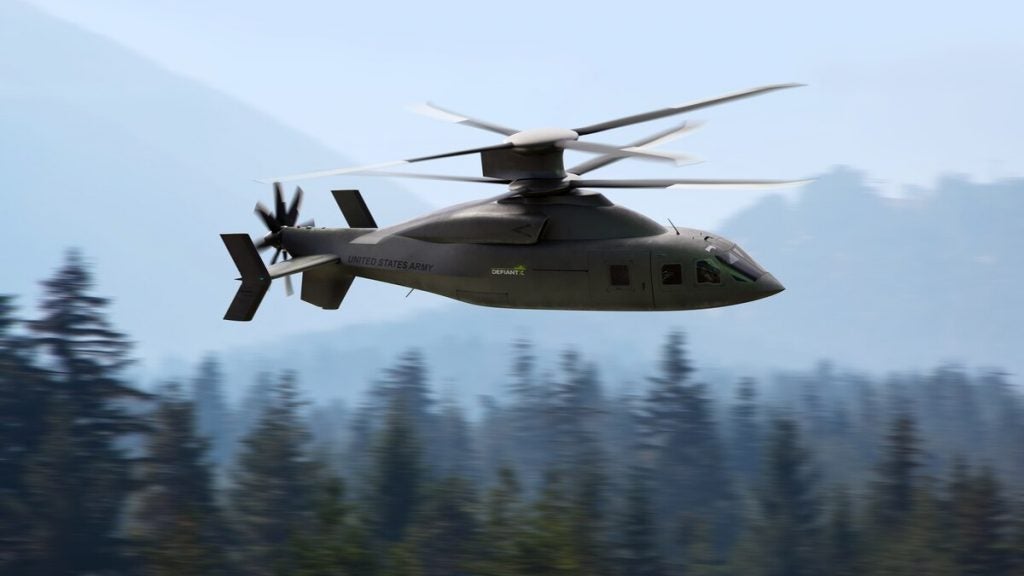Sikorsky/Boeing Reveal Proposed Blackhawk Replacement – the Defiant X
Sikorsky (now a division of Lockheed Martin) and Boeing have revealed details on their entry for the U.S. Army’s Future Long-Range Assault Aircraft (FLRAA) competition. The new aircraft, named Defiant-X, is built with a compound design that combines the lifting rotors with a back mounted pusher propeller for propulsion.
According to the Boeing/Sikorsky team this will make the Defiant-X “…the fastest, most manoeuvrable and most survivable assault helicopter in history.”
The helicopter, which is intended to replace the U.S. Army’s UH-60 Blackhawks in the 2030s, will be able to fly twice as far and as fast as the helicopters it will replace, according to the manufacturers.
Though the Defiant-X is currently only undergoing computer simulations it is based on the team’s existing SB>1 Defiant test bed. This first flew in 2019 and achieved a top speed of 211 knots (243 mph) in level flight in October last year.
Steve Parker, vice president and general manager of Boeing Vertical Lift, said that:
“Defiant X is purpose-built for a modernized Army that requires expanded reach, survivability and lethality. This weapon system will give Soldiers unequalled technological advantage and connectivity over adversaries in a multi-domain battle space.”
However, the Defiant-X faces competition in the form of Bell’s X-280. A tilt rotor design in the form pioneered in service by the Boeing-Boeing V-22 Osprey, the X-280 is already flying and undergoing testing. It has already demonstrated several capabilities that the U.S. Army has specified would be required in the eventual winner, as well as a top speed in level flight of 280 knots (322 mph).
The US Army’s FARA program is also ongoing with Bell and Sikorsky going head to head to replace the OH-58 Kiowa and become the Future Attack Reconnaissance Aircraft.
With the U.S. Army expected to release a request for proposal on the FLRAA later this year and a contract award expected in 2022, both teams will no doubt become extremely voluble throughout 2021 as they both compete for one of the largest defense contracts of the next decade.

